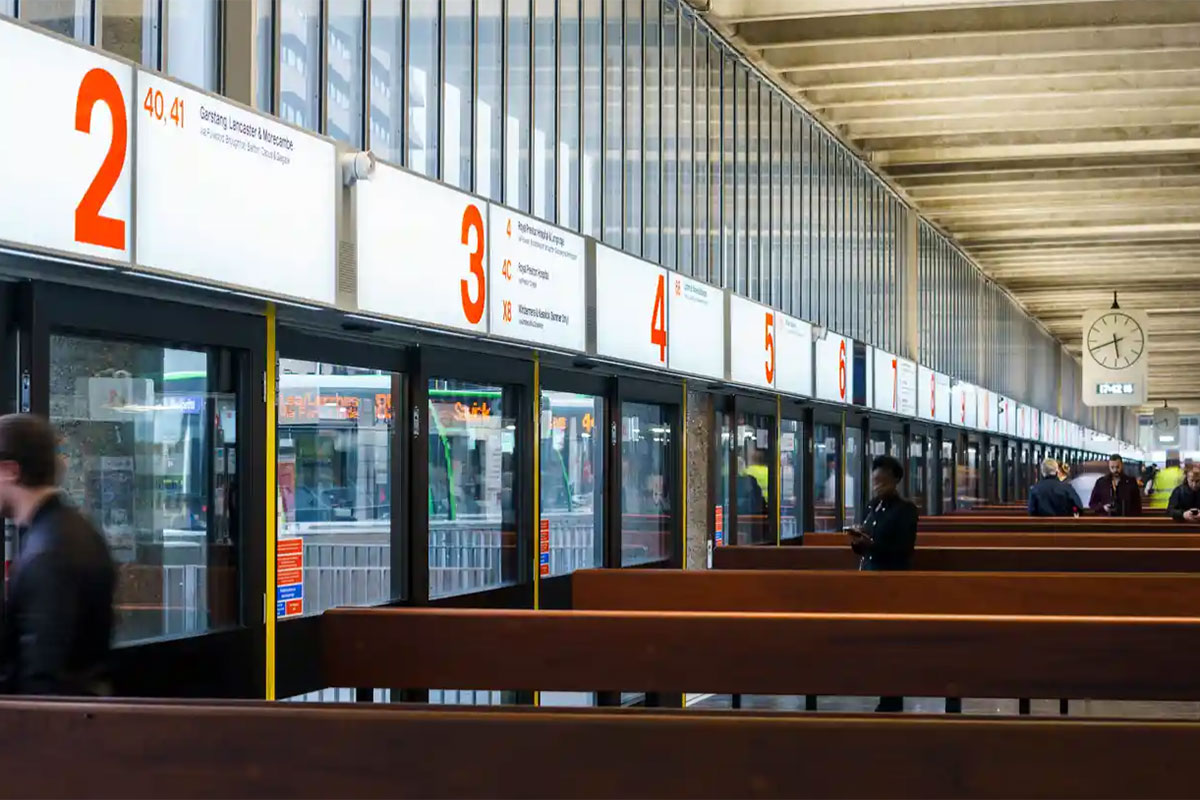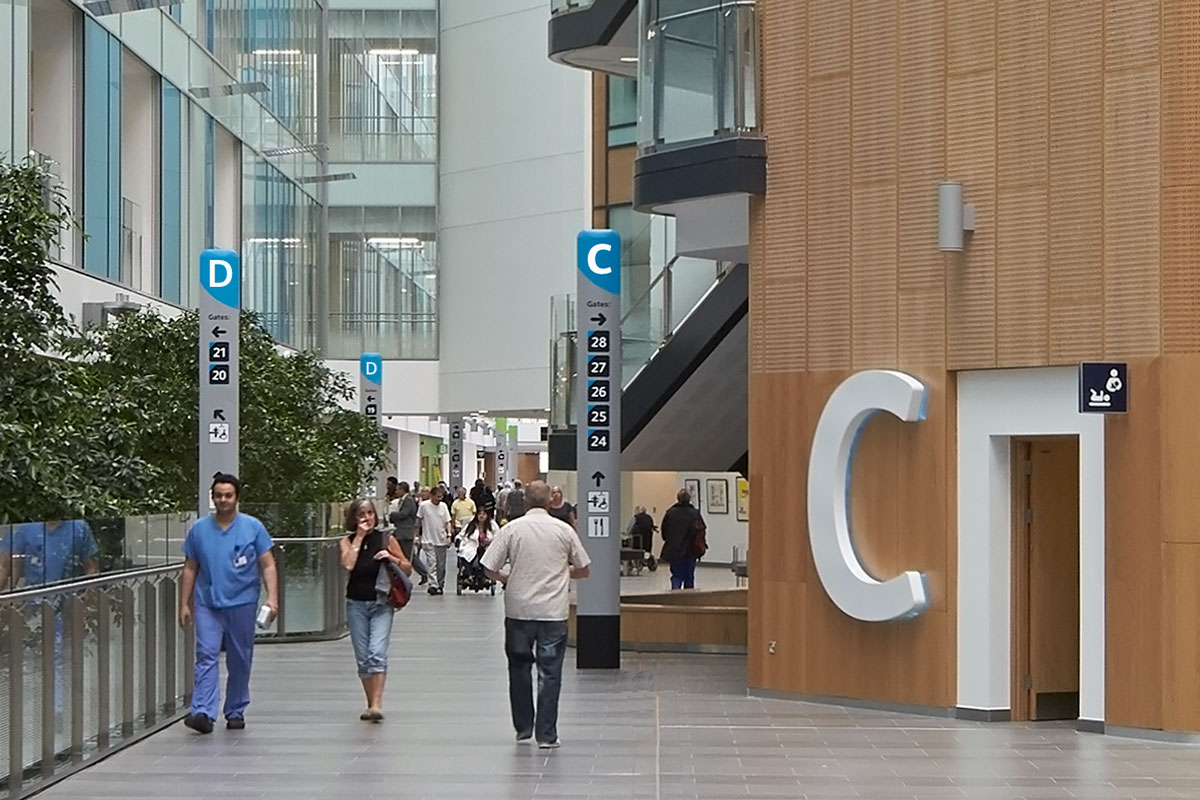#{Title}
#{Copy}
Senior wayfinding strategist and designer Lili Larratea explains how wayfinding is a collaborative and people-centred process that directly affects the overall experience of a space. Previous to BDP, she was the lead wayfinding designer for London Luton Airport, Tate St. Ives and the V&A Museum.
When was the last time you got lost in a city centre, a hospital or couldn’t find your car in a shopping mall? And did that feeling change your opinion of the place you visited?
Wayfinding can make or break your experience of a place. If done well, it can enhance the connection between a brand and its customers and help tell the story of who and what a brand stands for. Wayfinding can influence behaviour and shape your experience of a building, a park, a city or a country by breaking down and presenting complex information in a clear way so that users can understand and use it in a short amount of time. A great example is the schematic London tube map designed by Harry Beck in 1931.
Similar to the design of buildings and other spaces, wayfinding design is an interdisciplinary and collaborative process that involves a wide range of skills including psychology, human factors, ethnographic research and graphic and product design. It includes observing and empathising with users to define their needs, understanding spatial cognition principles (how the brain perceives and processes information from our environment) and the visual design of information.
The term Wayfinding is making its way into designers vocabulary but it is still an unknown discipline to the wider public. It was only accepted as a new term in the Oxford Dictionary in December 2015 where it is defined as the process or activity of ascertaining one's position and planning and following a route. It was first coined by Kevin Lynch in his book The Image of the City (1960).
In reality, the process of wayfinding starts at home and it covers a person’s end to end journey. It includes pre-visit information (finding out how to get to your desired destination); the journey there (following a consistent set of directions); the experience of the place (making you aware of what’s available and where) and your journey back (finding your way out and onward travel). In addition, it has to consider how the provision of basic needs and services (clean toilets, wi-fi, seating) may influence a user’s behaviour and overall experience. The act of orientating oneself is complex and a person’s state of mind can work against it. Someone trying to find their way at an airport after a 12h flight may not pay the same attention as others would with a clear mind.
The in-house wayfinding designers at BDP have been working on wayfinding projects since the 1960s. An early example is the Preston Bus Station, a Modernist building with memorable features that opened to the public in 1969. Its subsequent refurbishment in 2014 saw the Council pushing for a logo free environment thus paying homage to the simplicity of the original sign design, typography and layout style, based on the premise that ’the information on the building is all that the user needs to know.’ This people-centred approach is at the core of all spatial studies. Whilst a good brand inspires trust in a service or product, a good wayfinding system can make people feel welcome and gain a sense of belonging.

Photograph: Gareth Gardner via The Guardian The Guardian - Preston bus station review – a glorious reprieve
Other BDP examples include the first airport-like gate system introduced in NHS hospitals about 15 years ago with a recent example being the Southmead Hospital in Bristol. With both airports and hospitals being considered high stress environments, the least amount of directional information a patient or a passenger has to retain the more likely to decrease cognitive overload (the more information, the more processes the brain has to perform). In the case of Southmead hospital, simply following a letter and a number will get you to your appointment without the need to learn long and un-familiar words.

Southmead Hospital, North Bristol NHS Trust
Wayfinding’s ultimate role is to connect all the elements of the built environment with its users so they can have the best possible experience. When brought in at the beginning of a project it can identify user needs and gaps and help shape an environment to maximise intuitive navigation and minimise the use of signs.